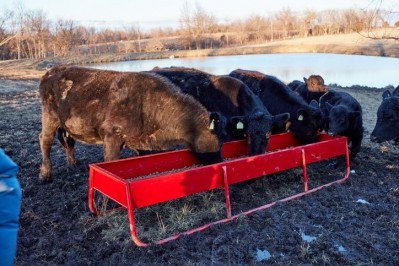AFIA, NFGA offer database to make FSMA compliance easier

The American Feed Industry Association (AFIA) and National Grain and Feed Association (NGFA), along with their related foundations, contracted the University of Minnesota’s Center for Food Safety and Animal Health to review scientific literature and published recall reports regarding hazards that have been found in animal food, both groups said.
The Food Safety Modernization Act (FSMA) requires animal food facilities to complete their own hazard analysis, Sarah Novak, vice president, membership and public relations with AFIA, told FeedNavigator. “We started thinking if everyone has to do this, it would be very difficult,” she added.
The hazard analysis requirements take effect in the fall for large businesses, said the US Food and Drug Administration.
Database and use details
The hazard assessment tool was designed to help facilities that make feed and pet food comply with upcoming portions of FSMA regulation, said the AFIA and NGFA. The section – current good manufacturing practice and hazard analysis and risk-based preventive controls for food for animals – requires animal food facilities to establish a tailored food safety plan.
The plan starts with a hazard analysis of both a facility and feed generated at the location, said both groups. The analysis has to consider several sources including illness data, experience and scientific reports.
“When a company has to start doing a FSMA analysis, they have to identify the hazards they would have to control or deal with,” said Novak.
The database project compiled summaries of that information for manufacturers, she said. “It was going through all the scientific literature and published recalls,” she added.
Work on the database took about 14 months to complete and cost about $160,000, she said. The information collected was broken out by species group so manufacturers can target needed details.
The information presented comes into play as facilities research what hazards may exist regarding the type of products they produce, she said. “If you’re not making aquaculture feed you don’t care about those hazards,” she added.
“For some facilities, like a large integrated facility that only makes products for one species, it may be a little easier,” said Novak.
The database covers 16 different species including cattle, swine, chickens, aquaculture, sheep and goats, she said. “We tried to get as much as we could in there,” she added.
The tool was designed to reduce the work feed companies would need to do when reviewing reports and information, both groups said. The scientific literature database tool summarizes the information found that involved the occurrence of hazards in animal food.
It also offers a qualitative score to indicate how severe the identified hazards are for the 16 different animal species, the groups said.
Additionally, the project includes training on how to use the data covered, said Novak. “There are video tutorials because it is complicated – there are videos they can watch to help them understand how to use the information,” she added.
However, it remains a starting point in work developing a facility specific hazard analysis, said the AFIA and NGFA. “It is important to note that facilities during their assessment also will need to incorporate experience data and other information in identifying hazards and determining severity and probability to determine if the hazard is one that is known or reasonably foreseeable and that may require a preventive control,” they added.
The database is set to be updated periodically, as FSMA requires facilities to complete a reanalysis of hazards at least every three years, the groups said.







